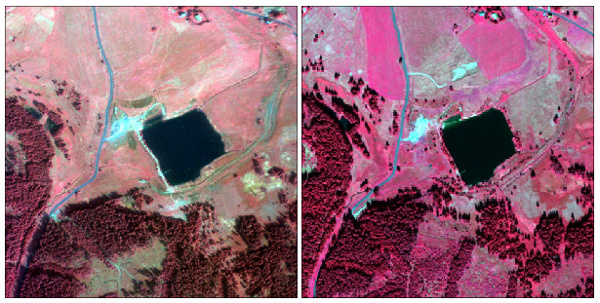 |
INMON (2012-2015) Supported by LH-KONTAKT II programme |
| INMON: Innovation of the methods for monitoring heath status of Norway spruce stands in the Ore Mountains using hyperspectral data primary investigator: doc.RNDr. Jana AlbrechtovŠ Ph.D. The project is focused on monitoring of the health status of forest ecosystems in the area of so called "Black Triangle" (including Ore and Giant Mountains). This area was exposed to very heavy imission load for more than 50 years which caused the failure of the local forest ecosystems to withstand stressful situations. Although the imission load has significantly decreased in last 20 years, it effects will persist for a long time. Monitoring of the forest ecosystems health status is going to be conducted on the Norway spruce (Picea abies) stands using both qualitative and quantitative methods of imaging spectroscopy based mostly on the use of airborne hyperspectral image data. The health conditions of the Norway spruce stands will be evaluated by the basis of both biochemical and biophysical parameters (ie. leaf pigments content, lignin, LAI etc.) The relationship between biochemical and spectral parameters of collected spruce needles on one side and chemical properties of soil on the second one is also going to be proved in this project. The project follows the earlier research conducted in 1998-2004 in cooperation between the Charles University in Prague and NASA Goddard Space Flight Center (GSFC). The research was based on the use of the airborne hyperspectral image data acquired by the ASAS sensor in 1998 (it was the first application of the hyperspectral technology in the Czech Republic ever). Therefore there is an unique opportunity to compare the changes in health status of the Norway spruce stands which happened in the period between the acquisition of the hyperspectral data (1998 and 2013).
Quicklooks of the airborne hyperspectral data ASAS 1998 (left) and APEX 2013 (right) |
Partners:†
-
Czech Geological Survey
-
PÝF UK (KEBR, KAGIK)
-
NASA Goddard Space Flight Center
All Right Reserved © 2014 by Mischu
